[IMPORTANT UPDATE (October 21, 2018): Please note that C. Crane have addressed issues that I found in the first production run of the CC Skywave SSB. Click here to read the update and click here to read my full review of the CC Skywave SSB.]
Just last month, the little radio that I found most exciting this year hit the market: the C. Crane CC Skywave SSB.
Why the appeal for me? Frankly, since I do most of my portable radio listening while traveling, and since I typically travel out of one bag, having a compact radio with performance and features is an absolute must in my world. Up to this point, the original CC Skywave is the radio I often choose when traveling, as it packs so many useful features: AM, FM, Shortwave, AIR band, Weather Radio, and like any good travel radio, clock, alarm, and sleep functions, lacking only SSB mode. So it goes without saying that I was excited to see its newest edition.
The CC Skywave SSB
What follows is an account of my experience evaluating CC Skywave SSB production units, and a brief summary of their performance.
My hope is that this summary review will help readers with purchase decisions. Note that this is merely preliminary to an extensive, unabridged review that will appear in a future issue of The Spectrum Monitor magazine, then in the SWLing Post the following month.
Pre-production Skywave SSB
As many readers know, I was sent a pre-production model of the Skywave SSB for evaluation this summer.
As I mentioned in my sneak peek and reiterated to a number of inquisitive readers: I never base a product review or comment upon pre-production radios. I don’t comment about the performance of the pre-production model for an obvious reason: pre-production radios are quite simply not the versions that ship to customers upon the product release.
Now that the production model has been in the wild for a few weeks, I feel more at liberty to talk about my experience with the pre-production Skywave SSB.
In short: I have been very pleased, indeed, with the pre-production model’s performance. In terms of features, it is a nice incremental upgrade from the original Skywave. In terms of performance, it’s also tweaked in the right direction. As an early adopter of the original Skywave, I’ve been truly enthusiastic about this evaluation pre-production model.
All the notes I took while evaluating the pre-production Skywave SSB were made for C. Crane so they could hopefully implement any changes or address concerns prior to starting the first production run. But the truth is, I found the pre-production model in my possession to be quite solid, so my suggestions were minor.
Putting my pre-production model aside, I ordered an actual production unit on C. Crane’s website just like everyone else.
C. Crane kindly dispatched my unit as soon as they received the first production batch from the factory so I could get to work on the full review.
Quirks with the first production units
I was eager to get started on the review of the Skywave SSB, so as soon as I received it, I did what I always do: compared it with other radios.
I make my comparisons, by the way, at least fifty yards from my house to separate the radios from any inadvertent sources of local noise.
Production Radio #1
My first comparison was with the Digitech AR-1780 and the original CC Skywave. I quickly noted that the Skywave SSB was very slightly less sensitive than the other radios. I had tested the pre-production unit enough to know that the Skywave SSB’s performance should at least be on par with the original Skywave.
Upon careful listening, I discovered the production unit had a very faint, internally-generated whine on some of the shortwave bands; when tuned to marginal signals, this whine manifested itself as variable background noise. Between signals it was audible as a faint background whine, hardly noticeable. With that said, the whine was most notable while tuning––since the Skywave SSB mutes between frequency changes, the whine was most conspicuous during audio recovery.
The pre-production unit had no trace of an internally-generated whine. Audio was very clean in comparison.
Here’s a sample of the first production radio being tuned down from 10,000 kHz in 5 kHz tuning steps:
Here’s a sample from the pre-production unit:
Hear the whine in the first sample? Yes, so do I.
I contacted C. Crane promptly, and to their credit, they immediately dispatched another unit from inventory, via UPS Next Day, along with a return label to send my faulty unit back to their engineering team.
Production Radio #2
The second unit arrived while I was on Thanksgiving vacation, but was sent to me directly at my hotel. The day I received the replacement Skywave SSB, I put it on the air. The first listening session with it, alone, revealed that this unit did not have the internally-generated whine, however, this unit had issues with sensitivity. All of my comparison receivers were outperforming this Skywave SSB on the shortwave broadcast bands. When I compared it with the pre-production Skywave SSB unit and the first production unit, the second production unit was about four to five S-units less sensitive. Odd.
I sent both production radios back to C. Crane with detailed notes and sample recordings. Their engineering team confirmed my findings and started looking into the variations in QC and double-checking their inventory to make sure none shipped with these problems.
Production Radio #3
A few days later, I was sent a third production unit. After putting it on the air, I immediately noticed the same faint noise characteristics of my first full production unit, which is to say, the notorious whine.
Once again, I contacted C. Crane. This time, I requested that no less than three radios be sent to me, and they kindly expedite the request.
Production Radios #4, #5, and #6
Yesterday, I tested all three radios. What follows is a quick assessment of those radios:
Performance
In a nutshell, the three production units I tested yesterday performed better than my second and third production radios on all bands. Strictly in terms of sensitivity, these were on par with the pre-production unit. Very good.
But with that said, even the last three production units I received had internally-generated noises that I couldn’t help but notice. Disappointing.
At this point, I must assume these noises are prevalent throughout the first production run since all but one of the six CC Skywave SSB production units I tested have it. Meanwhile, the only one that didn’t have the noise had serious sensitivity issues.
Noises
Yesterday, I spent two full hours searching for birdies (internally generated noises) and other anomalies on the three CC Skywave SSB production units I received Monday. Each radio’s noise location varied slightly (within 20-40 kHz). The following locations are roughly the average of frequencies:
Birdies
Birdies are a fairly common occurrence among sensitive receivers, and the CC Skywave SSB has about an average number. The birdies I noted are outside the space where I do my broadcast listening:
- 2,305 kHz
- 9,220 kHz
- 11,520 kHz
Background audio whine/tone
All of the production units (save Radio #2) have a very slight audio whine present––either via the internal speaker or headphones––on certain portions of the spectrum.
In my first full production unit, I believe this whine may have slightly affected the unit’s overall sensitivity. On the last three production units, it didn’t seem to have as much of an impact on overall sensitivity.
The whine is still there, however, and occasionally when tuned to a weak signal within one of these zones, other faint sweeping noises could be detected in the background.
Sometimes it’s even more noticeable when the broadcaster is weak and is located within one of the whine zones. Here’s an example of 10 MHz WWV time station comparing the original Skywave with the Skywave SSB. Note that yesterday we had terrible propagation due to a geo storm, so WWV was very weak indeed.
Listen for the sweeping tones:
Here are the frequency ranges where I noted the background whine:
- 7,830 – 8335 kHz
- 8,610 – 8,690 kHz (note: very faint)
- 9,770 – 10,415 kHz
- 11,585 – 11810 kHz
Another oddity is a noise I found prevalent on CHU Canada’s 7,850 kHz frequency. I’m guessing it may be due to the combination of a DSP birdie on top of a relatively strong broadcaster.
Here’s a video comparing the original Skywave with one of the production models:
I noted no birdies or noises on the mediumwave band. The FM, AIR band, and Weather frequencies perform beautifully.
Summary: The bad news––and the good
At the moment, it appears the first production run of the CC Skywave SSB has some challenging QC issues. Therefore, unfortunately, I can only recommend it at present if you’re willing to check your unit very carefully for any of the internally-generated noises I noted above.
If, however, you’ve already purchased a Skywave SSB and have noticed the noises, then please contact C. Crane. I’ve been a C. Crane customer for many years and I’m confident they will take care of your issue.
This being said, the truth is, I sympathize with C. Crane. It must be challenging to get things right and truly consistent on the first production run of a radio––especially on a tiny compact radio like the Skywave SSB. It must be especially hard to keep noises out of the audio chain when so much is crammed into such a tiny package.
I fully suspect these issues will be sorted out in the second production run which, of course, I will test and review.
But the good news, and it’s sincerely good news, is this: if C. Crane can produce a CC Skywave SSB as good as the pre-production unit, they’ll truly have a winner. So let’s keep our fingers crossed that C. Crane can do it again…and again.

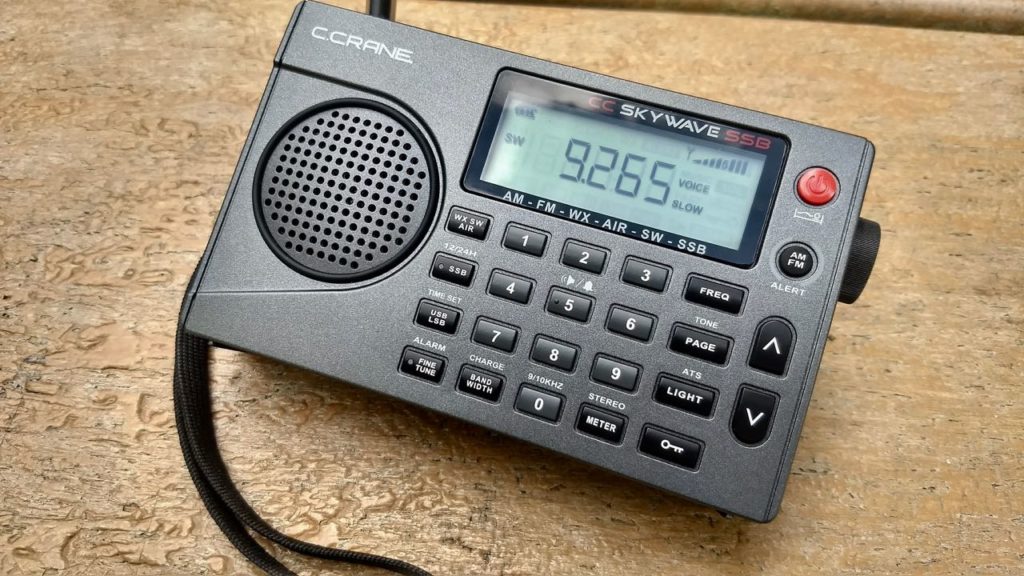
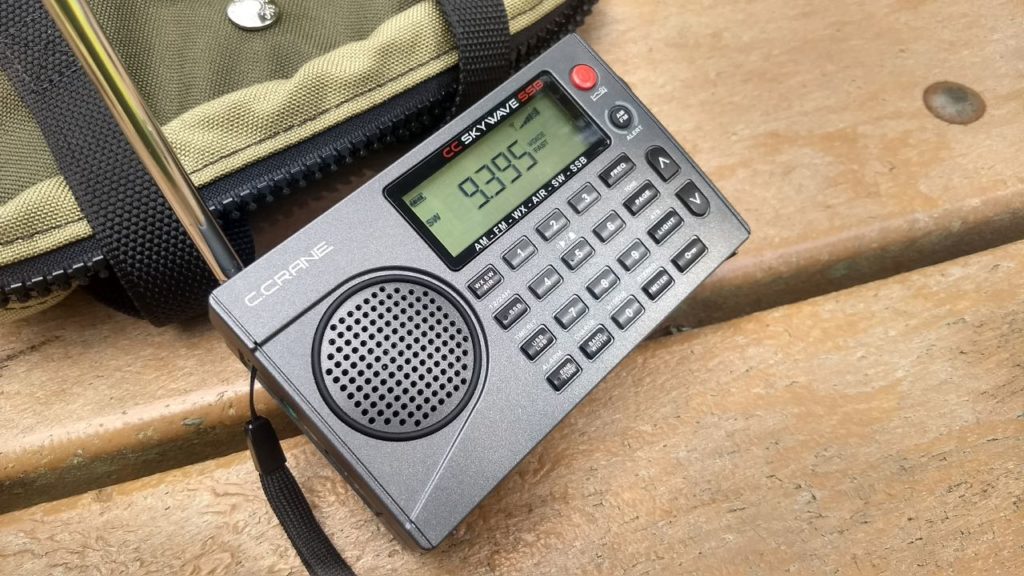
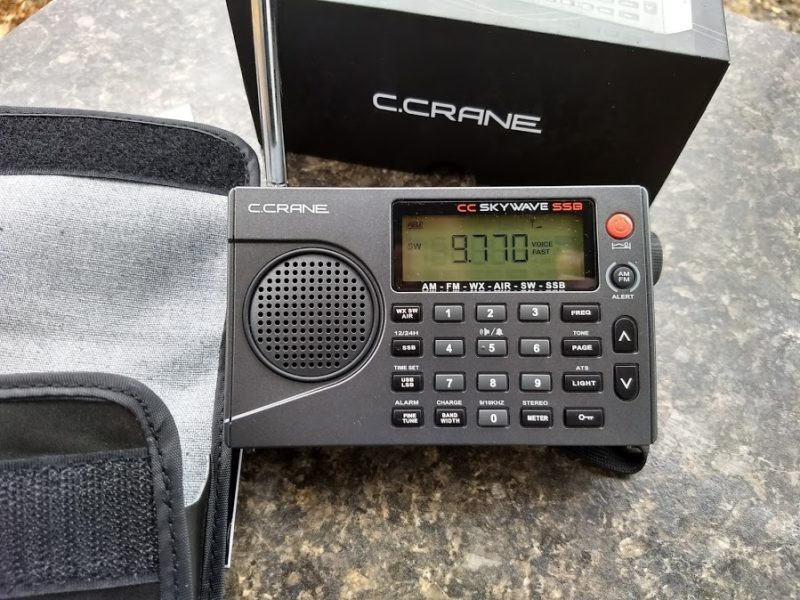
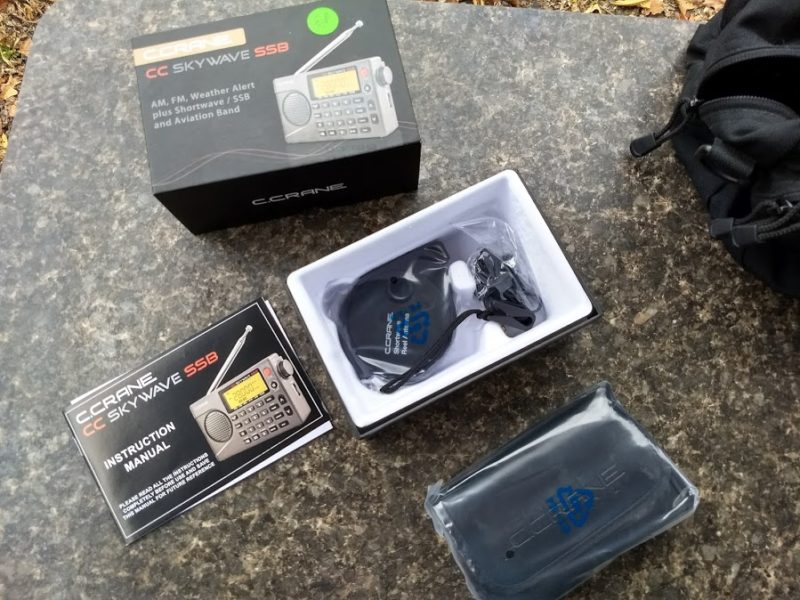
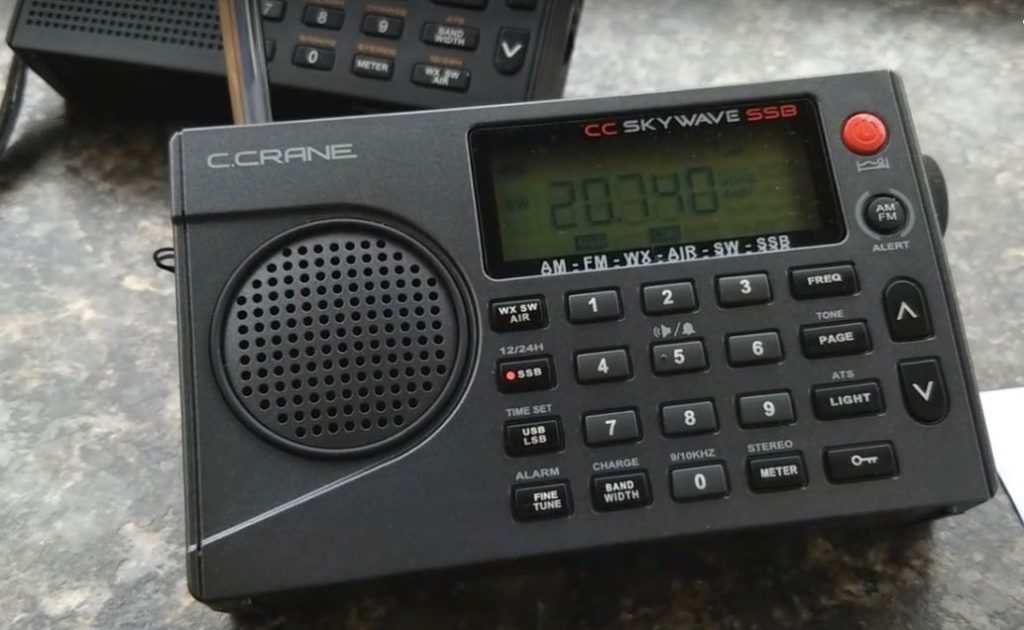
Thanks for the detailed report. I have a Skywave and an considering upgrading to the SSB version. Did you check other frequency ranges for the whine? I’m mostly interested in performance in the ham bands more so than 31 meters broadcast. Many thanks!
I have found yet another problem with the Skywave SSB, and it is a pretty annoying one: when you try to tune to any frequency on the SW band using the keypad or the up/down arrows, the radio produces a buzzing noise as you press the frequency numbers or the arrow keys (you may have to turn up the volume so you can hear it). This does not happen when you use the tuning knob instead and does not happen in the AM or FM bands. Is anyone else here experiencing the same? This radio is going back to Crane for sure as soon as I get back to the USA. I have contacted them twice via email about the two other problems described above with no responses. Pretty disappointing.
As it happens, Crane just replied via email suggesting I return the radio and offering a replacement. That is certainly helpful. It is good when a company stands for their customers.
Knock on wood, my newly arrived Skywave SSB seems to be free of the various bugaboos (birdies, het noise etc.) that are being reported. I can’t explain it because I usually have terrible luck when it comes to this sort of thing.
Now C.Crane needs to add long wave, a sync lock, RDS, an external antenna input, dual clocks (UTC and local selectable) that display while the radio is on and show the meter band on the display too along with backlit keys. That would be as close to a perfect radio as I’ve ever seen and I would gladly pay whatever the asking price.
Golan, nearly all those things you want are available in the Eton (Grundig) Satellit, which can be had for under $200 if you know where to look. It is a larger radio than the two C Crane Skywaves and the audio quality is much better, but it is still small enough for travel. The sync detector is not as good as with the old Sony radios (the ICF-2010 set the standard), but it is a good option to consider for all the things you want.
I am not associated with Eton in any way.
Thanks for the suggestion, Ramon. As it happens, I recently bought an Eton “Grundig Edition” Satellit. It’s not a bad little radio but when it comes to display layout, the Grundig G4000a is my gold standard. I wish all radios were like that one.
BTW, the Satellit is currently available from Radioworld in Toronto for $100 Canadian (about $78 USD). They’re practically giving them away. 🙂
Thank you Thomas for your review of the CC Skywave SSB first production run units. I found your review very interesting and very informative, and in rather stark contrast to Rocky Robello’s review (separate SWLing post) and to a review posted by Jay Allen (11.27.2017).
I found it hard to believe you were all talking about the same radio. Robello and Allen were dealing with the good Dr. Jekyll versions of the CC Skywave SSB , whereas your half dozen production units obviouuly represented the evil Mr. Hyde versions. The “Screaming Banshee” clip shown in the video was particularly disturbing. It seems to me that quality control is ll over the map.
I really want to buy this radio, but it strikes me that the early adopters, particularly in this case, have unwittingly become Beta Testers for C. Crane.
And this may be the sacrifice that is need in order to achieve the “Holy Grail” in the ULtraPortable class of SW multiband radios. It’s something we all want very much, but as C. Crane has demonstrated, it is extremely difficult to acheve on a mass -production basis.
Roger Fitzharris
P.S. I would appreciate your thoughts, Thomas. Thank You.
To add to your comment, it must be excruciatingly hard to deal with a Chinese manufacturer who will keep insisting that they are doing everything right even though everyone knows they must be cutting corners somewhere but cannot prove it! How do we know, you ask? THE PRE-PRODUCTION UNITS WERE JUST FINE, THAT’s HOW!!!
BTW, I noticed another problem and I wonder if other users of the Skywave SSB are experiencing the same:
When ATS is activated on the SW band, the radio starts scanning at 2300 KHz and ends at 26 MHz, but the coverage on this band is from 1711 KHz to 30 MHz. The scanning therefore has been programed to be the same as for the old Skywave and does not scan the entire band on the Skywave SSB. I think Crane has quite a bit of homework to do.
Yes, I noticed this as well. Thanks for your report!
Thomas, have you returned all of your production Skywave SSB radios and/or have you tried any others in addition to the ones you used in your review?
Last week, I received a replacement for my first one. The replacement does not exhibit the shortwave “whine” as bad as my first one but on SSB, it is really bad – again in the 8.5 to 9.1 MHz area. I will be returning my second radio to C. Crane. Here are some notes that I will enclose with it:
First of all, I would like to thank you for all your help in resolving the problems I am having with the Skywave SSB. My first Skywave SSB had problems with whine/heterodyne sounding noises on various shortwave frequency ranges. Unfortunately, I am noticing similar problems with my replacement Skywave SSB.
The shortwave “whine” noise is not apparent in the “AM” mode but in “SSB” mode, the noise is still very evident in the following ranges:
2.145MHz – 2.355MHz – low whine mainly in “USB” mode.
7.220MHz – 7.650MHz – low whine noticeable in “SSB” mode. (USB more so than LSB)
8.540MHz – 9.025MHz in “SSB” mode. The 8.620MHz through 8.870MHz range has very noticeable and annoying whine which will vary in pitch while moving or handling the radio and when turning the dial light off and on. Whine is stronger on “USB” mode than on “LSB” mode.
10.800MHz – 11.200MHz low whine in “SSB” mode. (USB more so than LSB)
14.870MHz – 15.275MHz whine and whistling sounds noticeable on WWV and lower 19-meter broadcast stations.
25.880MHz – 25.920MHz – low whine/sweeping sounds in “SSB” mode. (Both USB and LSB)
Airband, WX, FM and AM bands are all excellent. Just having trouble with the whine in SSB mode on shortwave. Just to make sure I was not hearing any local noise/interference, I shut off the main circuit breaker providing power to our house and compared reception to my wife’s Skywave, my Sangean ATS-909 and a Yaesu FT-100 Amateur Radio rig. Only the Skywave SSB had the whine/heterodyne sounds on the above listed shortwave frequencies.
Just wondering if you have had any luck with your production Skywave SSB radios?
First one was Serial Number 1710000131 and second one is 1710001618. Still from the first production run?
Hope C. Crane can rectify the whine/heterodyne noises on the shortwave bands. I really like the Skywave SSB.
I also bought a Skywave SSB right after Thanksgiving at the price point of $150 – 10% special discount, that is about $135. It does have the same problem with birdies reported here, but it is very slight and not found on the MW (AM) and FM bands. I did compare it with my regular Skywave and the older model has no such issues. I wish Crane well, but prospective buyers would be well advised to wait at least six months until these issues are settled.
I decided that the lower wideband issue was not going to work for me and returning it. CCrane said they are looking into all the issues and appreciated my detailed feedback. I told customer service that I would be more than happy to reorder it in the future if they fix all these reported problems.
I hate cell phone keyboards. I meant Sideband issue, not wideband.
The internally generated faint whine is an artifact of the LCD display scanning and the switching power converters . It probably does not matter what frequency it is tuned to you hear the whine. The volume setting does not affect the level. I have the same problems with all my portable radio shack DX-3xx and DX-440. These radios are built to a price point so limited resources are paid to PCB board layout, shielding, packaging.
Bought one of these and checking it out now. I don’t have the whining sounds at 10 MHz but it does seem to be slightly insensitive on center frequency. While tuning to 9.999 MHz seems to give about 1/2 bar MORE signal and the audio gets slightly quieter. Checking out the same frequency on SSB, the Lower sideband seems slightly mistuned, I have to dial in about +14 or so compensation on WWV. I figure that WWV is not the problem! Could be mistuned but how do they tune a DSP?
Secondly, is that the DSP algorithm is being a bit too aggressive, for a split second, I can change the audio levels dramatically by just moving my hand closer to the antenna, touching it, moving it away. I notice the same behavior for a split second when changing from FM to AM and back again, part of the DSP is adjusting to new info being thrown at it. Similar audio effects with a violently fading signal on SW, the audio can drop out and in again as the DSP is coping with rapidly changing signal. This might be somewhat normal for DSP radios, I don’t have anything to compare it to.
Also, the SSB could be slightly more stable too, it can warble a little when moving it around (a minor issue). But on the AM band (mediumwave), the SSB is rock solid. The tuning of the LSB shows up there too but can be adjusted using Fine tuning.
I suppose the mistuning is enough of a problem for me to return it because it seems to reduce the signal to noise ratio when tuned on center frequency (Noisier with similar signal compared to tuning 1 kHz lower), especially since I expect to use the SSB function a lot! But I don’t want to get another one just to have problematic whining sounds. FM/AIR/WX works fine, MW is strong with a good extra bar antenna or lying passive on a small tuned loop antenna on MW. The Sony 2010 runs rings around this little radio on SW but that seems to be the only difference.
We’ll see, it is fun to use and will have to use it in a very RF quiet area this coming weekend. Thanks for everyone’s comments!
C.Crane just sent me a shipping label to return my Skywave SSB. Same issues as Thomas and others – the constant whine on shortwave. My wife and I have been happy C.Crane customers for 20 years and I trust they will identify and rectify the issues we are having with our new Skywave SSB radios.
Paul, I understand your frustration. I’ve put up with so much anxiety trying to deal with companies when I’ve received faulty product. From non-responses, to runarounds — you name it.
C. Crane has always done right by me, though. They’ve gone above and beyond to address my concerns the two or three times I’ve had some, and I own a lot of C. Crane product.
I wrote to them after Thomas pointed out this issue and I confirmed it on my own units. They’ve already responded and say I should not be experiencing this issue on my radios. They want them back to look at them. They’re sending pre-paid labels so I can easily get the units back to them.
They stated they wanted to cross-ship replacements but they are currently OOS. They will send them ASAP, according to the e-mail. Indeed, this is how they dealt with an original Skywave radio that I had to return to them for a QC issue: I received my pre-paid return label with the replacement unit.
When a company makes it this easy to deal with issues and saves me the anxiety I’ve experienced with so many others, I feel comfortable spending my money on them.
That’s just me. I understand everybody’s tolerance is different but as a generally anxious person, I’ve found C. Crane to be among the best at making it as easy on me as possible.
This issue aside, I absolutely love this radio too. It’s small, easy to pack, and has everything I need when an emergency breaks out.
I bought three of these for myself and family members for emergencies — they all exhibit the issue that Thomas pointed out.
Thank you, Thomas, for doing the hard work on this.
I have a couple Skywave non-SSBs as well and was able to confirm that the random sweeping whines were NOT heard on them when placed in the same location as the SSB units. 7850 kHz is indeed a great spot to do an initial test of the unit — I can barely hear the broadcast over the sweeping whines on the SSB units but it comes in clear as day on the older Skywaves. The whines were also evident at other places on the dial, of course. All missing on the ordinary Skywave.
The SSB is a great radio, aside from this issue. Compact with all the useful bands I would want in an emergency. I definitely do not want to part with the radios; I’d just like to have this issue rectified.
How many samples, and still not right.
Gives me no confidence at all.
No excuse in my opinion.
SOrry but that’s the harsh reality of life.
Why should a company get praised for failure ?
Regards,
Paul
To be fair, these are teething problems on a first run of radios and C.Crane have a very good reputation of fixing issues such as these. Probably not a design fault but tolerance/QC issues as it’s not happening on all radios in the run (I would be worried if it was a design fault).
Pretty sure C.Crane are all over this and will want to find out from their factory why this is happening.
Does not put me off, I still want one, once these issues are corrected.
Well spotted Thomas, glad to see you are providing feedback to C.Crane about issues noted on the SSB model.
Teething problems, although if C.Crane have sent out a load of the first run with these issues it will hit them in the pocket, although I would prefer a company deals with the issue rather than ignoring it.
I have total confidence in the new model being a success.